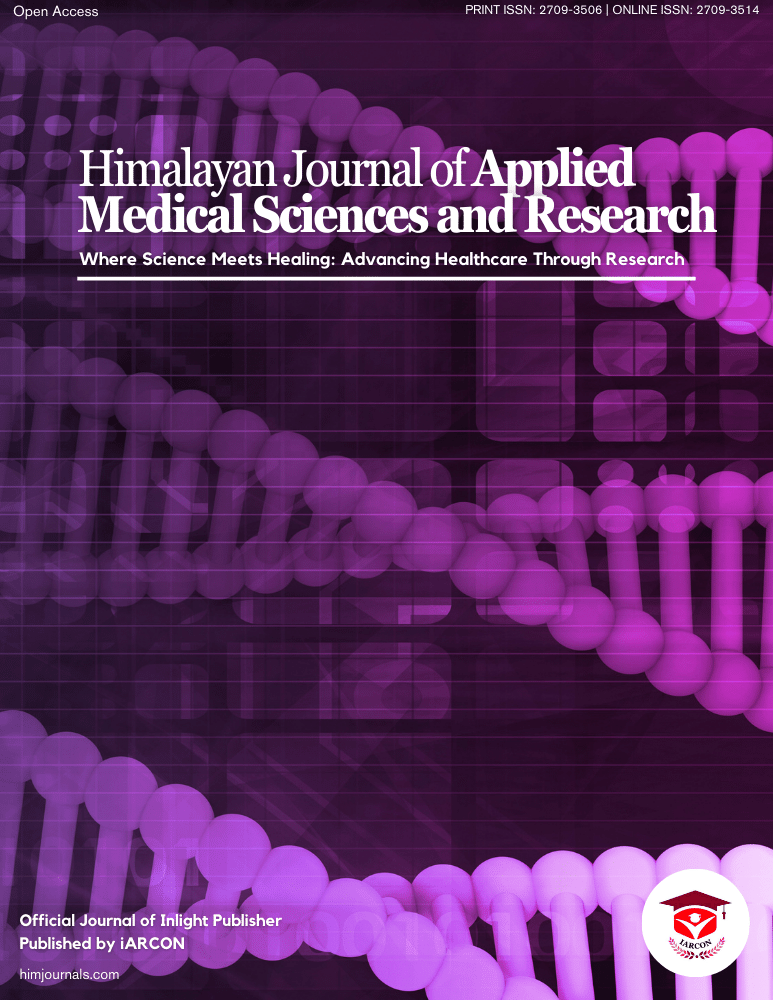APA
Jyoti Borah, N., Choudhury, U., Gautam, M. & Gohain, K. (2021). Anti-Ulcer Activity of Methanolic Extract of Alpinia Nigra Rhizome on Experimentallys Induced Gastric Ulceration in Albino Rats. Himalayan Journal of Applied Medical Sciences and Research, 2(1), 1-6.
MLA
Jyoti Borah, Naba, et al. "Anti-Ulcer Activity of Methanolic Extract of Alpinia Nigra Rhizome on Experimentallys Induced Gastric Ulceration in Albino Rats." Himalayan Journal of Applied Medical Sciences and Research 2.1 (2021): 1-6.
Chicago
Jyoti Borah, Naba, Urmi Choudhury, Mrinmoy Gautam and Kalpana Gohain. "Anti-Ulcer Activity of Methanolic Extract of Alpinia Nigra Rhizome on Experimentallys Induced Gastric Ulceration in Albino Rats." Himalayan Journal of Applied Medical Sciences and Research 2, no. 1 (2021): 1-6.
Harvard
Jyoti Borah, N., Choudhury, U., Gautam, M. and Gohain, K. (2021) 'Anti-Ulcer Activity of Methanolic Extract of Alpinia Nigra Rhizome on Experimentallys Induced Gastric Ulceration in Albino Rats' Himalayan Journal of Applied Medical Sciences and Research 2(1), pp. 1-6.
Vancouver
Jyoti Borah N, Choudhury U, Gautam M, Gohain K. Anti-Ulcer Activity of Methanolic Extract of Alpinia Nigra Rhizome on Experimentallys Induced Gastric Ulceration in Albino Rats. Himalayan Journal of Applied Medical Sciences and Research. 2021 Jan;2(1):1-6.


